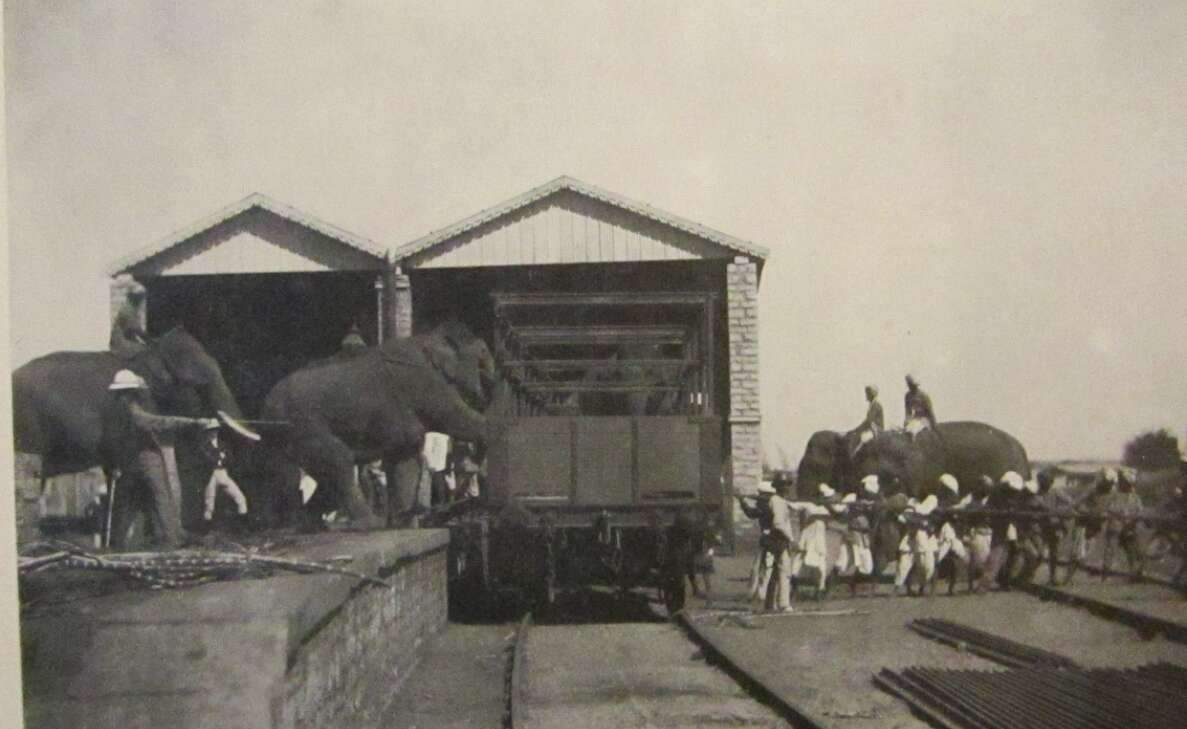

Marking the comeback of circus to the City of Destiny after over a decade, the Rambo Circus has brought with it a fun-filled display of acrobatics, mesmerising acts of juggling, and much more to Vizag. Happening till 19 February 2023, Sunday, at the Gurajada Kalakshetram, the show has been enthralling kids and adults alike over the last few days. With digital entertainment taking over our interests, the modern-day generation has been deprived of the circuses and the wide range of acts they bring. Unlike the 21st century, the early and mid-1900s frequently engaged the public with animals dancing to the ring masters’ commands, acrobats skyrocketing into the air in fancy costumes, and many eye-catchy performances. Reminiscing the old and golden days, John Castellas, a Vizag heritage enthusiast and aficionado, recalls the times when circus troupes often visited Vizagapatam.
Vizag had regular visiting circus troupes to the Old Town area since the 1920s. The circus tents were pitched on the maidan opposite St Aloysius School. The performances were under a tent with exhibitions of juggling, acrobatics, dancing monkeys, performing dogs and ponies, with the menagerie of animals sheltered under the great banyan tree near the East Coast Battalion Club (Recruiting Office). People could see the animals for a fee and feeding the monkeys was the main attraction.
In the 1940s, much to the delight of the students at school in the St John’s Church Compound Vizagapatam (Canadian Baptist European & Anglo-Indian Protestant School), the commotion at the platform at the old Vizag station signalled that the circus train had arrived. The elephants trumpeted and tigers roared, as they were unloaded on their transport wagons. So distracting was the noise, that the teachers would stop teaching and take the children to the station to witness the arrival. The elephants would be taken for water to the well that existed near St John’s Church.
The Kamala Circus came to Vizag in the 1950s and enthralled young and old alike. The comic juggling of the clowns, aerial acrobats’ daring deeds on the trapeze and of course, horses, camels, elephants, bears, tigers and lions in the arena. Cycle rickshaws or vans would promote the circus with loud music, and microphones in hand, telling the local population at large what the attractions were and what new prizes would be presented.
The circus would have a grand parade a few days before the circus started its shows. Elephants and camels, ponies and tigers in cages, accompanied by brass bands, somersaulting trapeze artists, jugglers and clowns would join in procession down the Main Road in Vizag, past the Kurupam Market, the Queen Victoria Statue, turn towards St Aloysius and the Lighthouse and return on the Beach Road past the Town Hall. The sights and sounds of the passing Circus parade would ensure that next week’s essay subject in most schools was ‘The Circus’ and to further befuddle most of us, it would also be a subject on the Hindi exam paper.
Print posters plastered the walls of the location and invited local dignitaries to the best seats in the arena. Entry fee in the 1950s was 4 Annas for the general seats, which rose to 12 Annas in the 1960s. Government officials, and Port and Railway officers’ families were privileged to have ringside seats. Entry tickets had a lucky number printed and prizes were awarded in the lucky draw.
On entry, the circus grounds were a kaleidoscope of colour and noise with families savouring the delights of the food bandies selling hot bajjai’s, pakora’s, ice drinks, sweets, sugarcane and corn snacks and jeedlu. Walking around the tents, one would see the animals in their cages or be able to feed the less ferocious ones. The first notes of the circus band would signal the start of the procession in the main arena, the music tempo would rise, the clowns would detour to create a sideshow and the spotlights would focus on the start of trapeze artists on the high wire.
The floodlights would then be trained on the steel-framed silver lattice orb that was promoted as the Globe of Death. Daredevil motorbike riders would start engines on their motorbikes that were designed to emit a maximum of noise and smoke. First one, then a second, third and even four of the speedsters would spin their bikes around the globe with synchronization that amazed the onlookers.
At the conclusion of the night, the Ring Master would announce the winner of the lucky ticket number, your prize – a tiffin carrier or hurricane lamp!
Many a Vizag youth would be captivated enough to run away from home and join the circus providing their family with a plot worthy of a Bollywood movie such as Raj Kapoor’s ‘Mera Naam Joker’, which was inspired by the travelling circus of yesteryear.
Should you have an anecdote or history on Vizag, the author would appreciate you contacting him at
jcastell@ozemail.com.auWritten by John Castellas whose family belonged to Vizag for five generations. Educated at St Aloysius, migrated to Melbourne, Australia in 1966, former General Manager of Engineering at Boeing & Qantas Airways, in retirement Lecturers in Aviation Management at Swinburne University and is a Vizag aficionado.
Stay tuned to Yo! Vizag website and Instagram for more interesting stories.
The search for new activities and experiences never ends. It's undoubtedly exciting to have one's…
The death of an 11-year-old girl near a church in Kancharapalem, Visakhapatnam, on the night…
Visakhapatnam district is set to see a major new development aimed at empowering the differently-abled…
A gruesome double murder in Rajeev Nagar, Ward 86, Visakhapatnam, was reported on 26 April…
For one born in Vizag or any Telugu city, there comes a time after primary…
As the weekend approaches, the yearning for rest and relaxation grows. With summer temperatures soaring,…
Leave a Comment